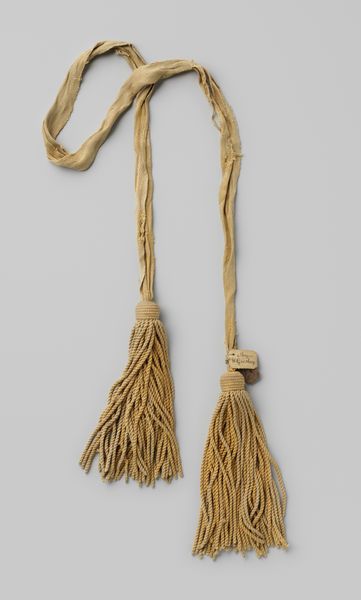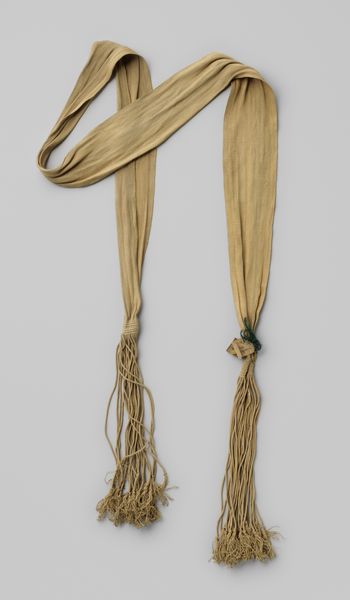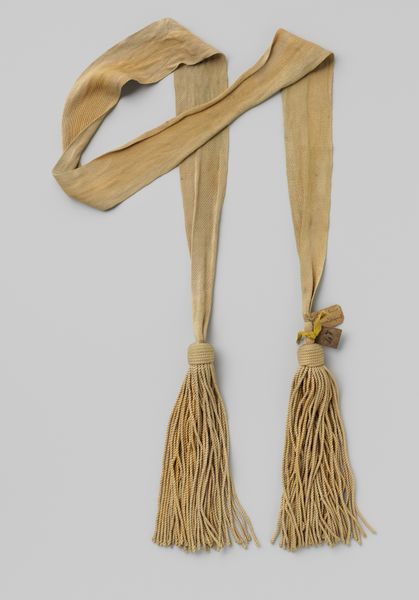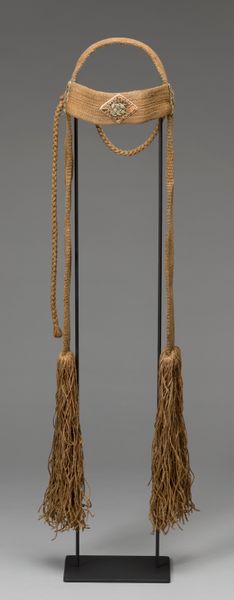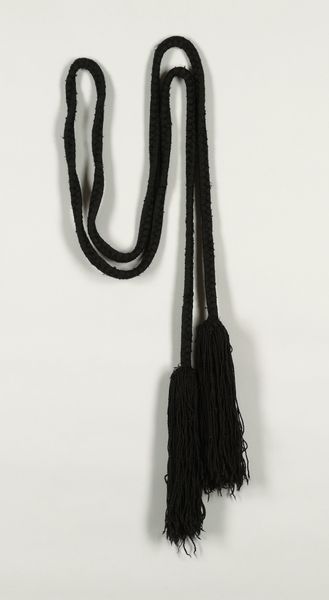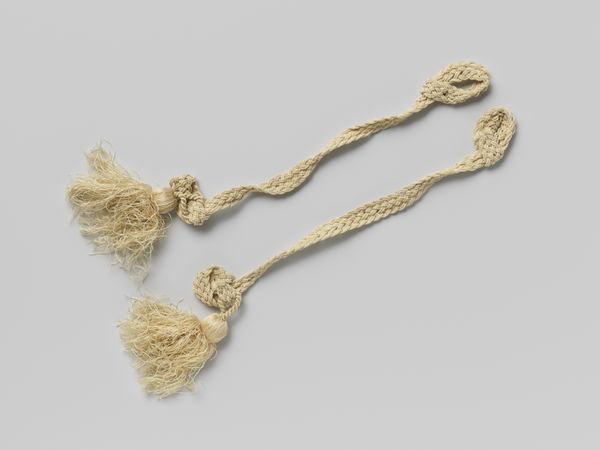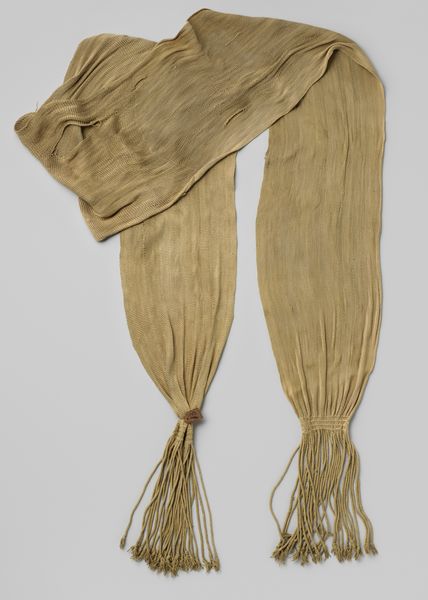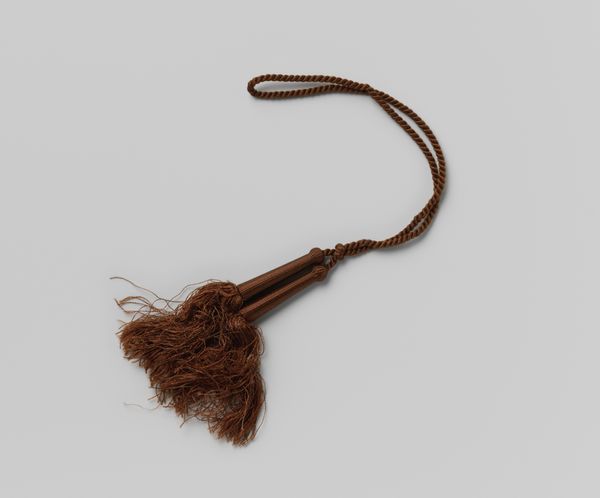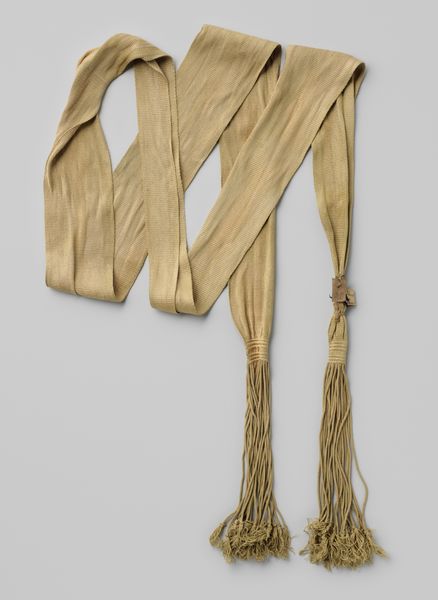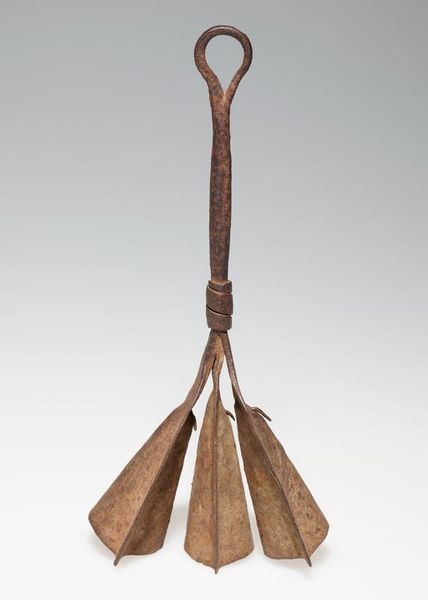
textile
#
textile
#
historical fashion
#
romanticism
Dimensions: width 88.5 cm, height 7 cm, depth 62 cm, length 170 cm, width 7 cm
Copyright: Rijks Museum: Open Domain
Curator: This is a sash, specifically one worn by Weijmar Schultz, a Second Lieutenant. It likely dates from somewhere between 1800 and 1830. It's crafted from textile, seemingly a simple weave, yet it carries a lot of weight. Editor: My first impression is how unassuming it appears, almost fragile. The light color and the tassels give it a delicate appearance that seems at odds with its presumed martial context. Curator: It’s interesting you pick up on the apparent delicacy, because the use of a textile like this is all about display – what message is woven in? Was it meant to convey authority, elegance, or perhaps something else entirely in that historical context? What kind of statement was Schultz making when wearing it, or more precisely, the statement his uniform made for him? Editor: For me, the sash evokes a sense of history. The tassels remind me of ceremonial objects. They act almost like pendulums marking the passage of time. I can't help but consider what historical events it might have witnessed, or what its presence might have represented in Schultz's life. There is something inherently symbolic in textiles associated with figures of power, connecting them to lineage, duty, and the unfolding narratives of war and peace. Curator: Absolutely. This object exists in the physical realm. The tactile reality of the sash offers us clues. How does its materiality impact our reading? We see the fine cords that gather to form those tassels and the folds and creases in the long loops. Those tell us of past use, but also something more general, something related to the labor involved and how this object became what we see today. This is something made to last. Editor: It speaks to the broader Romantic sensibilities of the era, connecting personal experience to the flow of grand historical movements through the symbolism of clothing, a representation of one's rank or position. The sash itself transforms into a token of identity. The seemingly subdued color and subtle embellishments actually enhance its impact, inviting one to look beyond the immediately visible to find a deeper truth. Curator: By focusing on the materiality of this piece, and teasing out information surrounding that historical context, we begin to consider a richer, and potentially radically more humane vision. Thank you for these added, more symbolic reflections. Editor: Indeed, thank you. By thinking through the layers of symbolic language embedded in this relatively humble object, and recognizing it as a nexus for shared cultural meaning, it comes vividly to life in our present.
Comments
No comments
Be the first to comment and join the conversation on the ultimate creative platform.
